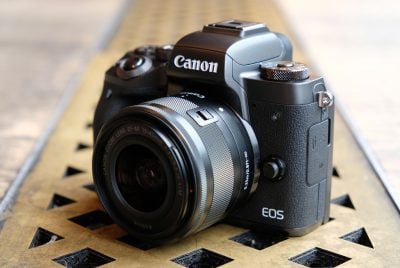Canon EOS M5 review
-
-
Written by Gordon Laing
Quality
To evaluate the real-life quality of the Canon EOS M5, I shot this outdoor scene with it using the EF-M 18-150mm, zoomed to around 35mm and closed to f5.6 for optimal quality. I was testing the Panasonic Lumix GH5 and Fujifilm XT2 at the same time, so shot the same scene moments apart for comparison; I realise both the GH5 and XT2 are higher-end bodies with larger price tags to match, but I’ve included them here out of interest and for reference. The GH5 because it represents one of the best quality options in the Micro four Thirds system, and the XT2 because its sensor and image processor are already filtering down into more affordable bodies including the XT20 – a key rival for the EOS M5. Note the GH5 and XT2 were both fitted with prime lenses, the Leica 25mm f1.4 closed to f4 and the XF 35mm f2 closed to f5.6 respectively; both are sharper lenses than the EF-M zoom, but this was the main lens supplied by Canon for testing.
As always I shot with each camera in RAW+JPEG mode with the default settings. I’m waiting for full support from Adobe on all bodies before comparing RAW files, so for now I’m presenting JPEGs straight out-of-camera. As always the crops below are taken from the areas marked with red rectangles and are presented here at 100%.
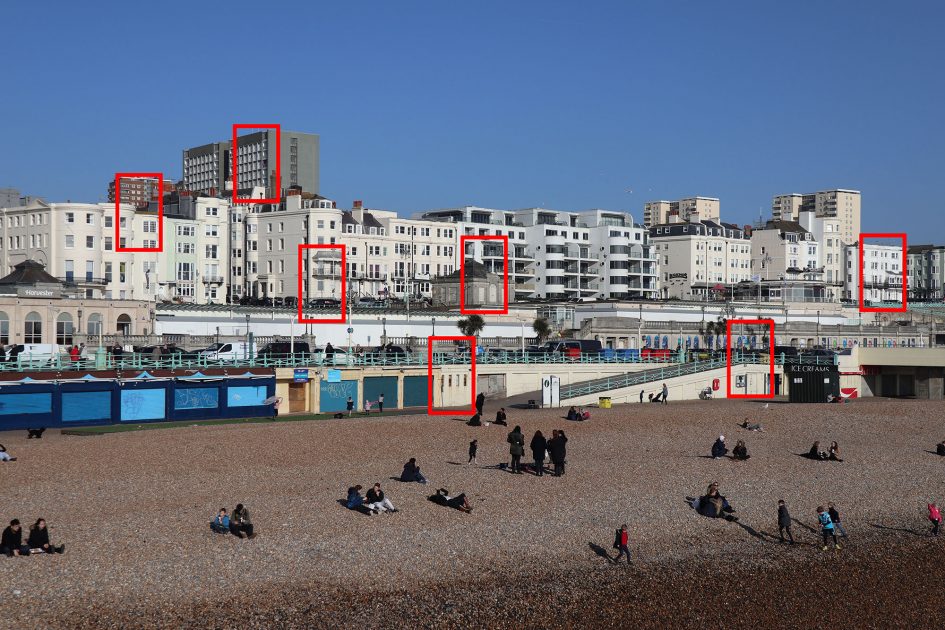
In the crops below you’re looking at the EOS M5 in the middle column, flanked on the left by the Lumix GH5 and on the right by the Fujifilm XT2. The kit zoom on the EOS M5 is unsurprisingly softer than the primes on the GH5 and XT2, particularly from the crops towards the edges, but as you get closer to the centre of the frame, the quality visibly improves and the degree of real-life detail becomes roughly similar on all three bodies. Fit the EOS M5 with a better quality lens and you should expect it to match the performance of the other two systems here across the frame.
So beyond illustrating the obvious that kit zooms are inevitably a little softer in the corners than a prime lens, this first test shows all three bodies performing on a similar level. Next I’ll show you how the EOS M5 compares in terms of noise performance across its sensitivity range.
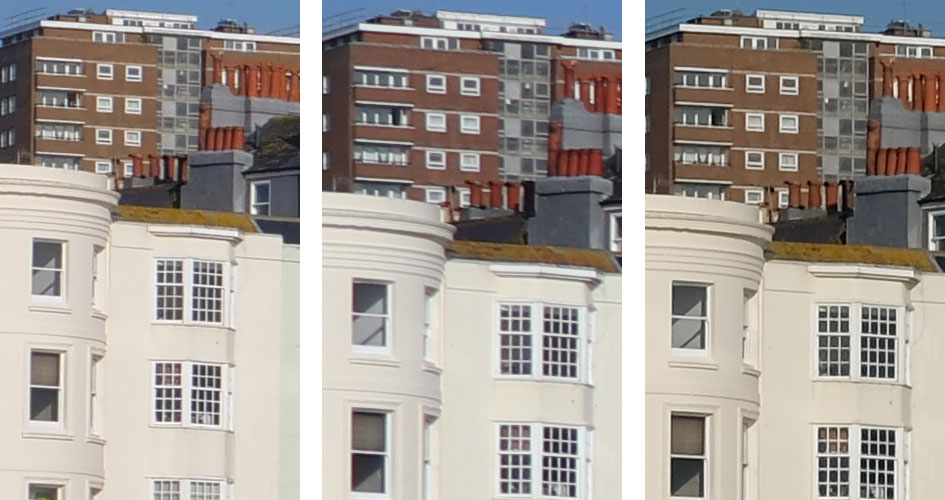
Above left: Panasonic Lumix GH5 (JPEG) using Leica 25mm f1.4 at f4, 200 ISO. Above center: Canon EOS M5 (JPEG) using EF-M 18-150mm at f5.6, 100 ISO. Above right: Fujifilm XT2 (JPEG) using Fujinon XF 35mm f2 at f5.6, 200 ISO.
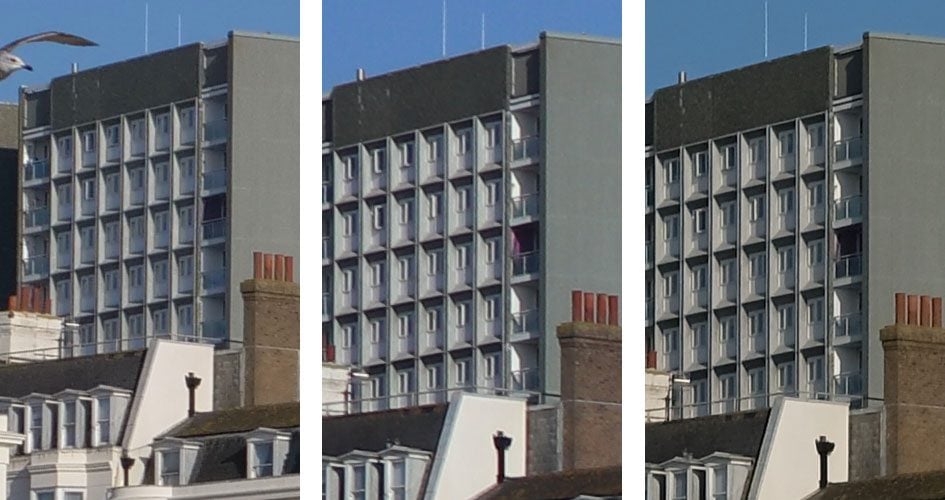
Above left: Panasonic Lumix GH5 (JPEG) using Leica 25mm f1.4 at f4, 200 ISO. Above center: Canon EOS M5 (JPEG) using EF-M 18-150mm at f5.6, 100 ISO. Above right: Fujifilm XT2 (JPEG) using Fujinon XF 35mm f2 at f5.6, 200 ISO.
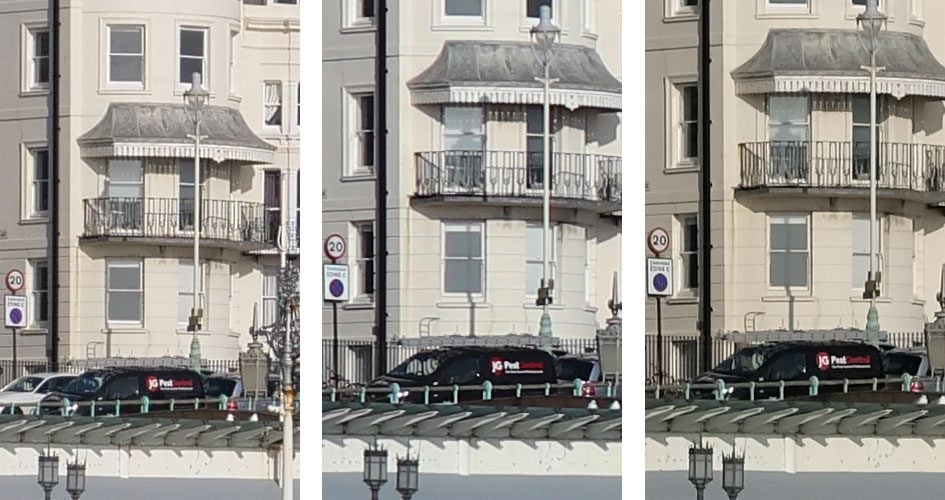
Above left: Panasonic Lumix GH5 (JPEG) using Leica 25mm f1.4 at f4, 200 ISO. Above center: Canon EOS M5 (JPEG) using EF-M 18-150mm at f5.6, 100 ISO. Above right: Fujifilm XT2 (JPEG) using Fujinon XF 35mm f2 at f5.6, 200 ISO.
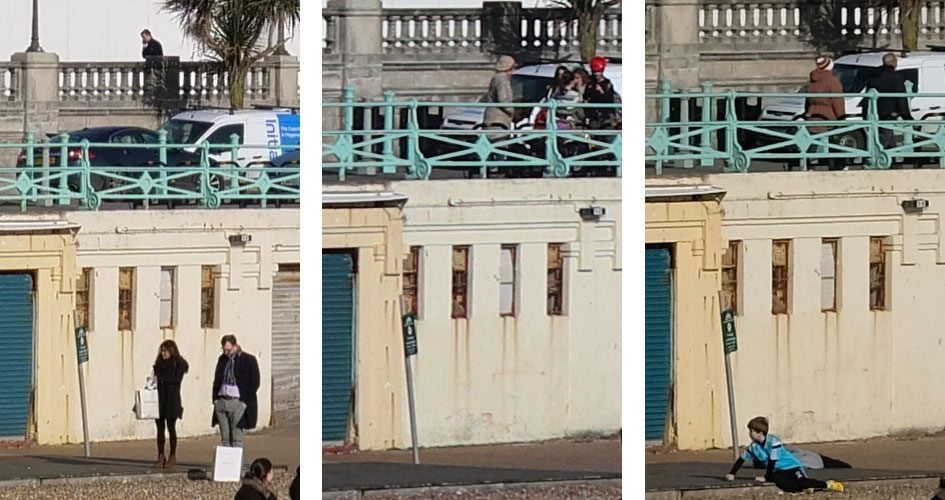
Above left: Panasonic Lumix GH5 (JPEG) using Leica 25mm f1.4 at f4, 200 ISO. Above center: Canon EOS M5 (JPEG) using EF-M 18-150mm at f5.6, 100 ISO. Above right: Fujifilm XT2 (JPEG) using Fujinon XF 35mm f2 at f5.6, 200 ISO.
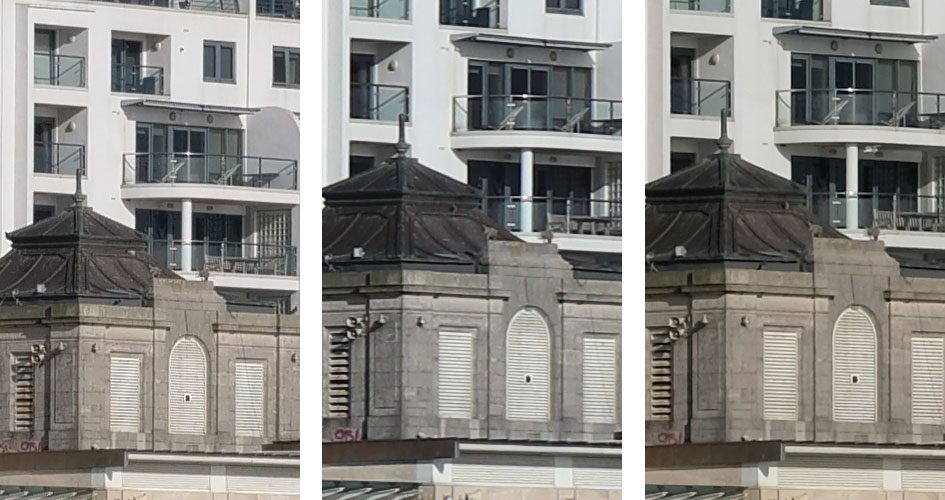
Above left: Panasonic Lumix GH5 (JPEG) using Leica 25mm f1.4 at f4, 200 ISO. Above center: Canon EOS M5 (JPEG) using EF-M 18-150mm at f5.6, 100 ISO. Above right: Fujifilm XT2 (JPEG) using Fujinon XF 35mm f2 at f5.6, 200 ISO.
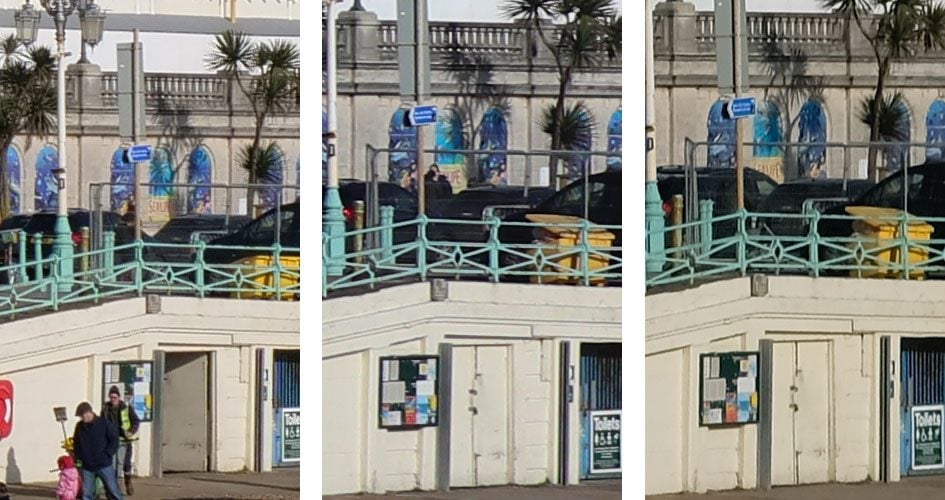
Above left: Panasonic Lumix GH5 (JPEG) using Leica 25mm f1.4 at f4, 200 ISO. Above center: Canon EOS M5 (JPEG) using EF-M 18-150mm at f5.6, 100 ISO. Above right: Fujifilm XT2 (JPEG) using Fujinon XF 35mm f2 at f5.6, 200 ISO.
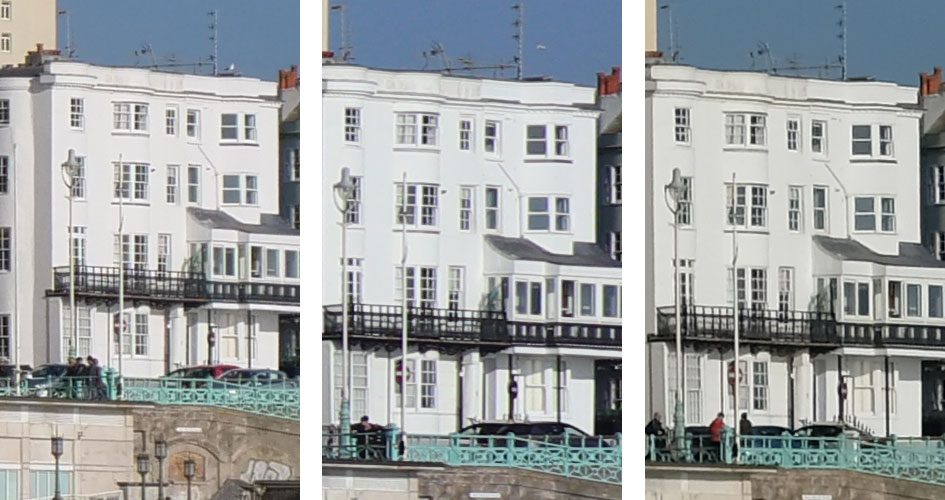
Above left: Panasonic Lumix GH5 (JPEG) using Leica 25mm f1.4 at f4, 200 ISO. Above center: Canon EOS M5 (JPEG) using EF-M 18-150mm at f5.6, 100 ISO. Above right: Fujifilm XT2 (JPEG) using Fujinon XF 35mm f2 at f5.6, 200 ISO.
Canon EOS M5 noise
To evaluate the real-life noise of the EOS M5, I shot this low-light scene with it using the EF-M 18-150mm lens, zoomed to roughly 35mm and closed to f5.6 for optimal quality. I was testing the Olympus OMD EM1 Mark II and Fujifilm XT2 at the same time, so shot the same scene moments; I realise both the EM1 II and XT2 are higher-end bodies with larger price tags to match, but I’ve included them here out of interest and for reference. The EM1 II because it represents one of the best quality options in the Micro four Thirds system, and the XT2 because its sensor and image processor are already filtering down into more affordable bodies including the XT20 – a key rival for the EOS M5. Note the EM1 II and XT2 were both fitted with prime lenses, the Leica 25mm f1.4 closed to f4 and the XF 35mm f2 closed to f5.6 respectively; both are sharper lenses than the EF-M zoom, but this was the main lens supplied by Canon for testing.
As always I shot with each camera in RAW+JPEG mode with the default settings. I’m waiting for full support from Adobe on all bodies before comparing RAW files, so for now I’m presenting JPEGs straight out-of-camera. As always the crops below are taken from the area marked with red rectangle and are presented here at 100%.
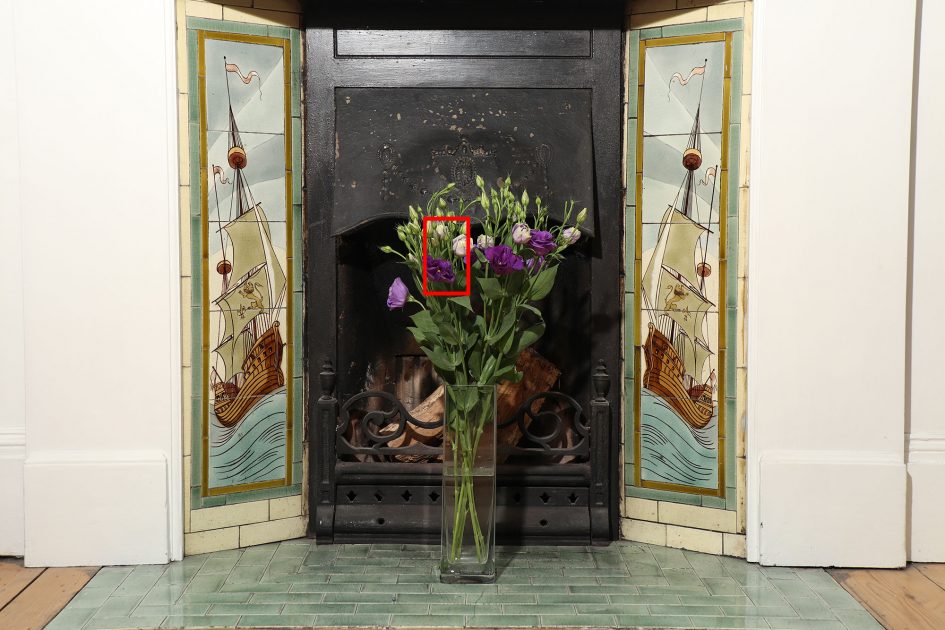
In the crops below you’re looking at, from left to right, the EOS M5, Fujifilm XT2 and Olympus OMD EM1 Mark II; note this is a different order to the first set of outdoor results.
Between 100 and 800 ISO, all three cameras deliver detailed results with little other than default processing styles to tell them apart. Like many Canon bodies, the EOS M5 takes a fairly laid-back approach to processing with a slightly softer-looking result than the other pair here which apply greater sharpening and contrast by default. Since this is entirely down to processing styles, it’s easy to adjust any of them to deliver more or less punch as desired. Note each camera was also set with a fixed white balance, so it’s interesting to see how each has rendered the same flower petals.
Canon’s approach to noise reduction is also a little less restrained than its rivals here, and as such speckles and other artefacts creep-in from around 1600 ISO. At 6400 ISO, things take a turn for the worse, with the combination of increased softness and noise making the EOS M5 JPEGs look the worst of the three here in my view. The Olympus OMD EM1 II isn’t far behind, and worryingly loses a great deal of saturation at its highest ISO, but of the three, it’s the Fujifilm XT2 which holds it together the most confidently. Again though, this is for in-camera JPEGs using the default settings. Your mileage may vary with RAW files or other picture styles.
Next check out my sample images, my in-depth review or my final verdict!
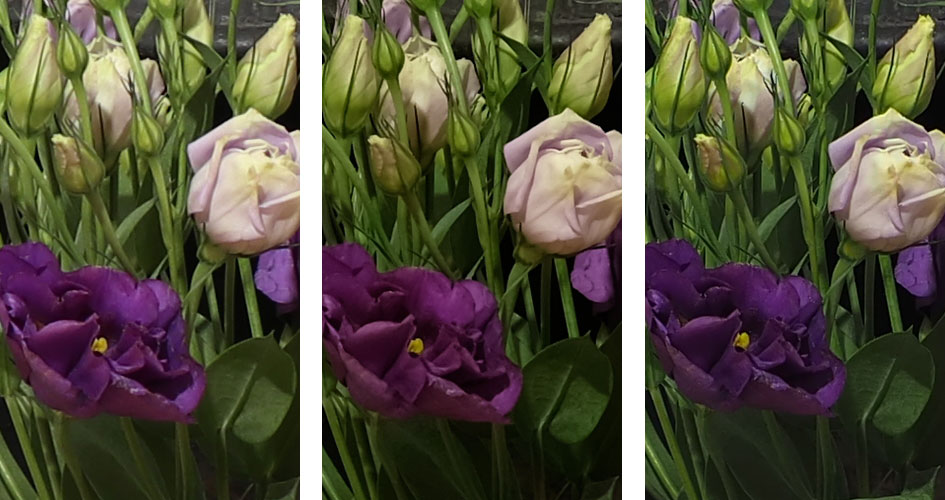
Above left: Canon EOS M5. Above center: Fujifilm XT2. Above right: Olympus OMD EM1 Mark II. All JPEG, all at 100 ISO.
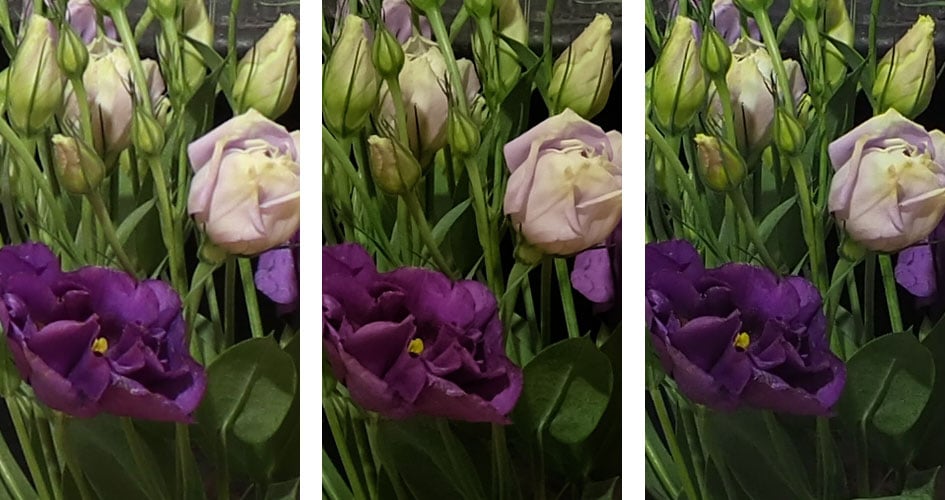
Above left: Canon EOS M5. Above center: Fujifilm XT2. Above right: Olympus OMD EM1 Mark II. All JPEG, all at 200 ISO.
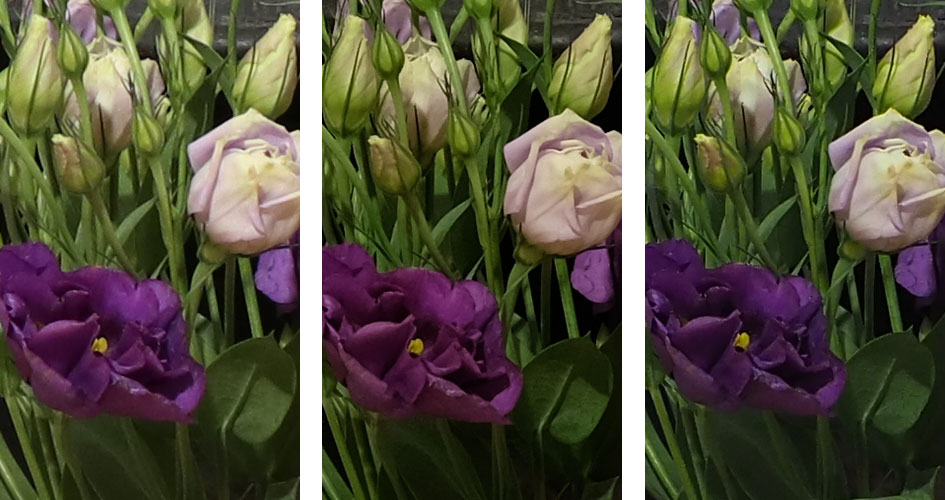
Above left: Canon EOS M5. Above center: Fujifilm XT2. Above right: Olympus OMD EM1 Mark II. All JPEG, all at 400 ISO.
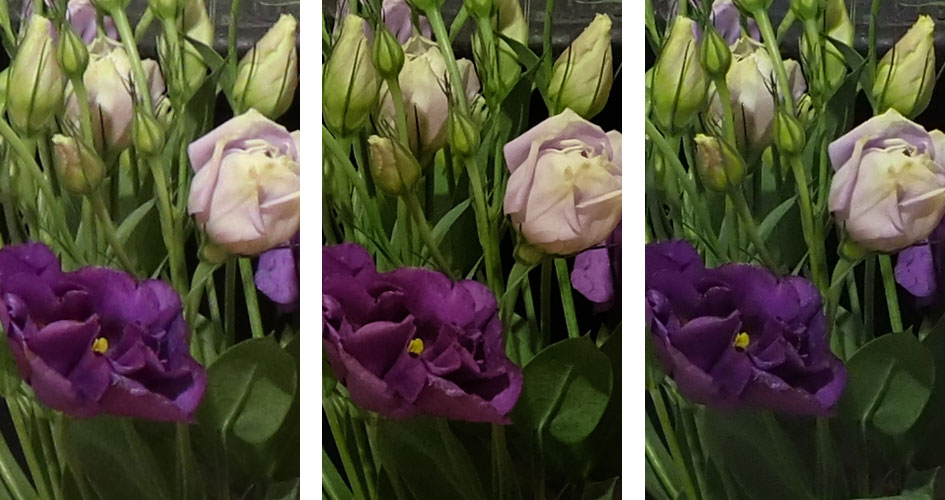
Above left: Canon EOS M5. Above center: Fujifilm XT2. Above right: Olympus OMD EM1 Mark II. All JPEG, all at 800 ISO.
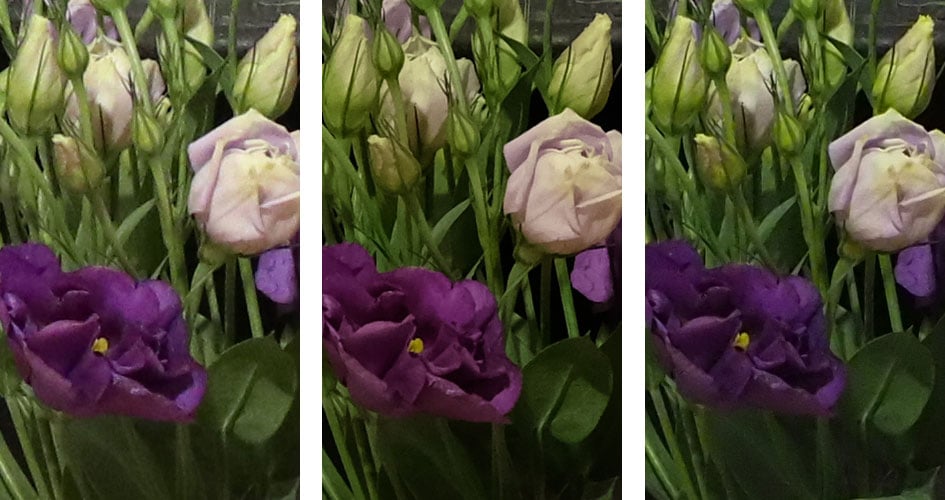
Above left: Canon EOS M5. Above center: Fujifilm XT2. Above right: Olympus OMD EM1 Mark II. All JPEG, all at 1600 ISO.
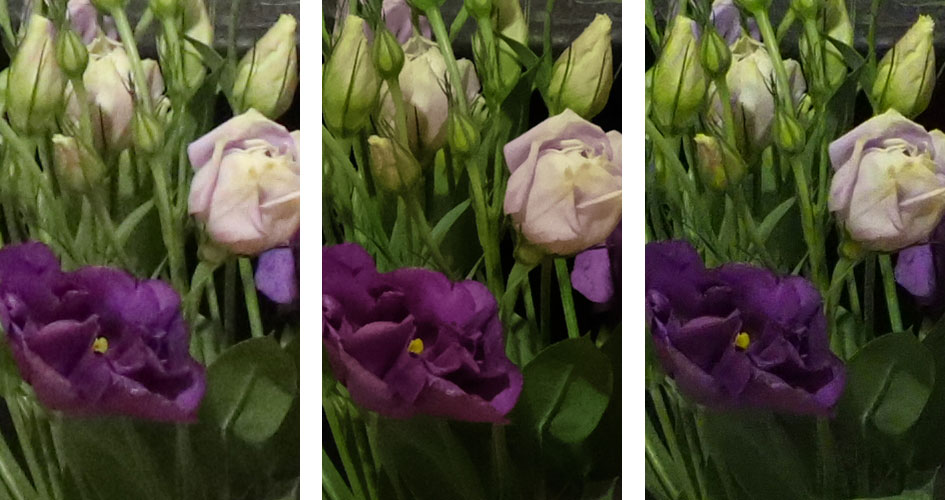
Above left: Canon EOS M5. Above center: Fujifilm XT2. Above right: Olympus OMD EM1 Mark II. All JPEG, all at 3200 ISO.
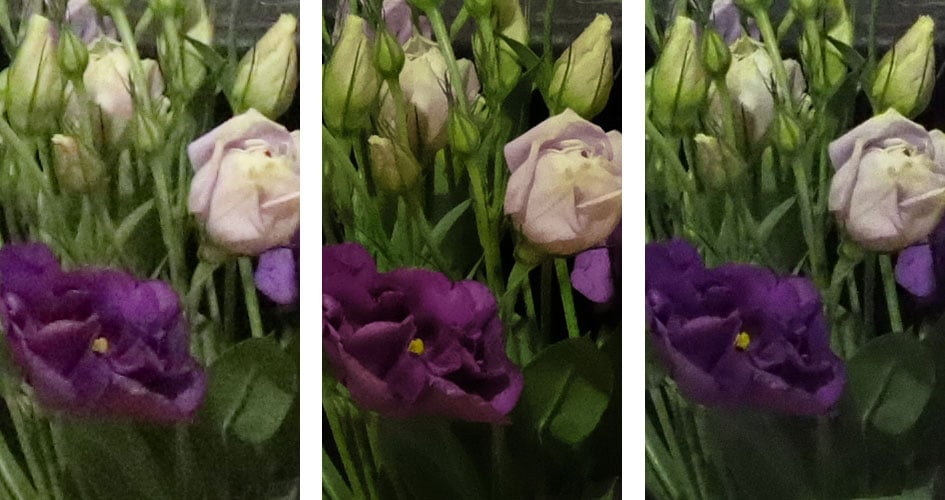
Above left: Canon EOS M5. Above center: Fujifilm XT2. Above right: Olympus OMD EM1 Mark II. All JPEG, all at 6400 ISO.
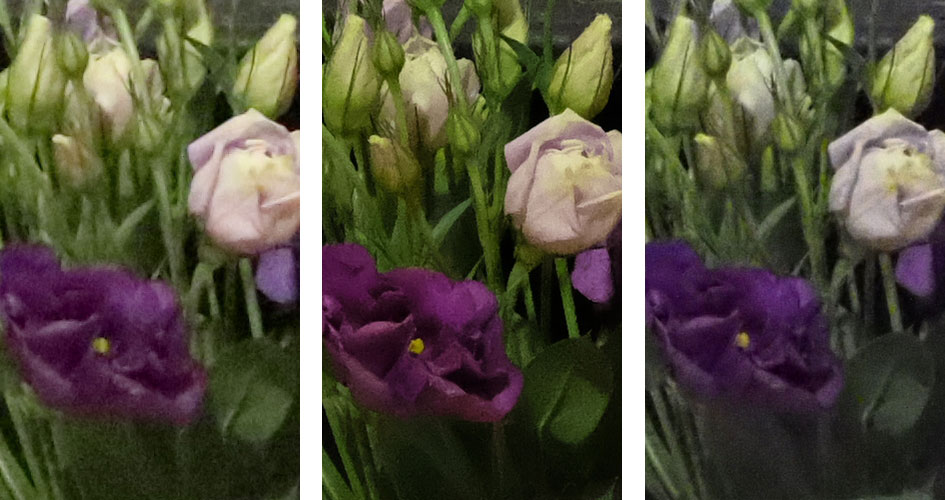
Above left: Canon EOS M5. Above center: Fujifilm XT2. Above right: Olympus OMD EM1 Mark II. All JPEG, all at 12800 ISO.
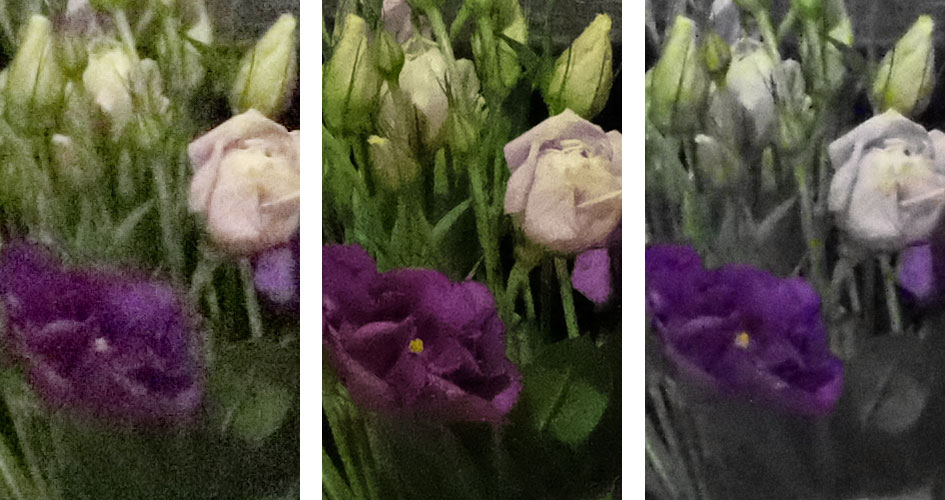
Above left: Canon EOS M5. Above center: Fujifilm XT2. Above right: Olympus OMD EM1 Mark II. All JPEG, all at 25600 ISO.




